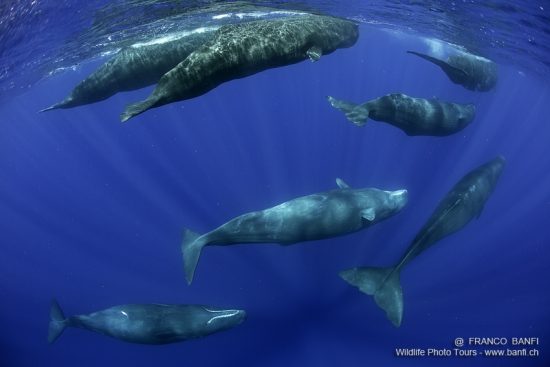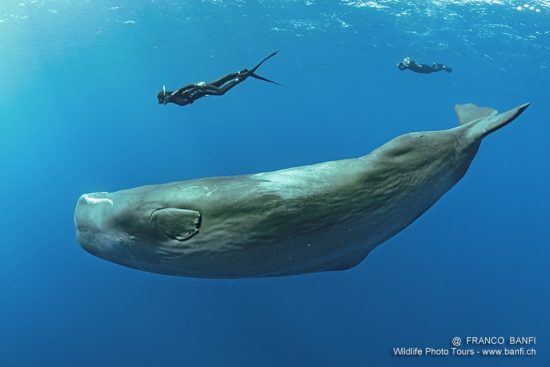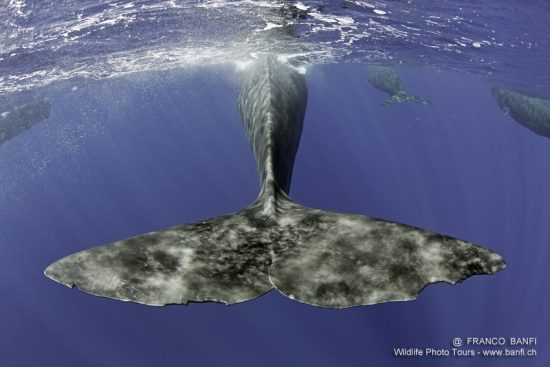





This post starts our contribution to the Mares blog, to which we are absolutely grateful, and our first post is about the sperm whales of the Caribbean Sea : one of the few places in the world which we regularly return to.
Next January we will go back to Dominica Island for the fifth year in a row. Why ?
Not only because Dominica Island is like “the” picture postcard of a Caribbean paradise : lush tropical forest, fragrant flowers, perfectly shaped double rainbows, sparkling blue seas, friendly smiling, beautiful people, Creole dance music, delicious fresh fruits or long-drinks and fine foods.
But because it is the vacation fantasy that we all yearn for : several pods (matriarchal linear families) of resident sperm whales live just a few miles off its western coast and are easily approachable (under governmental permit) just an inch from the surface of warm, clear blue water.
Sperm whales hold many natural world records and are powerful predators. One of the reasons why they have chosen to stay close to the sheltered inner coast of Dominica Island is that its sits at the intersection of grinding tectonic plates and has ridgelines that drop off steeply under the ocean’s surface. Sperm whales are located using hydrophones and are found on the surface along underwater topography about 1,000 metres deep, where their prey (large squids) live.
Over the years, sperm whales of the eastern Caribbean Sea have been well studied by academic researchers who have highlighted the complexity of the social behaviour of these giants.
The pods of the eastern Caribbean Sea are family groups with rich and varied social lives. A typical family consists of about seven individuals and can span three generations of females. Males mostly live solitary lives. Living in groups offers protection from predatory killer whales, which hunt young sperm whales.
For short periods, sperm whale groups also socialise with other families. They typically spend just a few days together before going their separate ways.
Are you interested in snorkelling side by side with these giants ?
If you need help, we have organized a tour for early 2017
To read something about our previous expeditions , click the links here below :
To see more about our activities, don't forget to follow us on our webpage , Facebook and Instagram, or sign up for our newletters.
 Franco and Sabrina
Franco and Sabrina 29th November 2016
29th November 2016 Dominica
Dominica 





